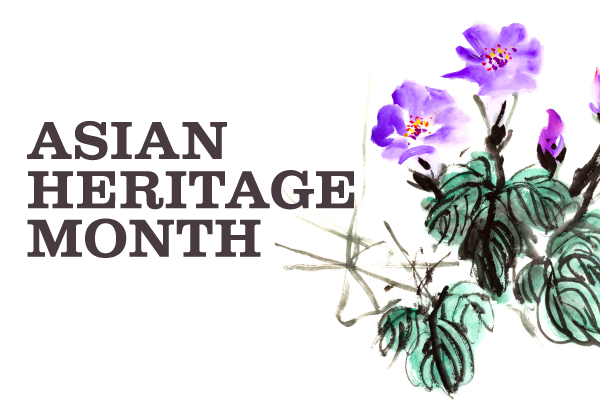
The month of May, in Canada, celebrates the achievements and heritage of Asian Canadians. In many ways, Asian Canadians faced an uphill battle from the moment they arrived in a younger Canada. So fervent was racism directed at immigrants from China, that even the labour movement fell prey to the vitriol.
Confederation was built on the back of railroads. It’s an idea first floated by Thomas Keefer, an engineer, author and businessman who called trains “the iron civilizer”.
“The young men and maidens, the old men and the matrons, daily collect around the cars: they wonder where so many well-dressed and rich-looking people come from and are going to, etc. – what queer machines those are which they see passing backwards and forwards.”1
The railroad and those “queer machines” created a stronger economy. Suddenly, there were stronger ties between very different people from very different geographical areas who found themselves a part of a greater “Canadian” society.
But all that came at a cost. More than 600 Chinese labourers lost their lives while working on the B.C. stretch of the Canadian Pacific Railway.2 It’s a sad part of our history that many Canadians only learned about thanks to CBC’s heritage project.
But the untold story was the fervent prejudice that Chinese immigrants had to deal with, at the hands of the public, the government and even one major labour union.
By 1911, close to ten percent of British Columbians were Chinese.3 The Chinese population was faced with countless stereotypes; the men were associated with opium, gambling and uncleanliness – women were regarded as prostitutes. Even if whites lived side by side with Asian immigrants, they really didn’t have a deep knowledge of their new neighbours; “they screened out many of the immigrants’ characteristics and magnified a few others,” contends Historian Peter Ward, at the University of British Columbia.4
But, overall, the Chinese were unpopular because they were seen as unfair competition for low-paying jobs.
Enter the Knights of Labor; a progressive labour reform organization that believed in organizing all workers, regardless of “skill, sex or race”.5 When an economic depression hit in the mid 1880s, the Knights began to argue against Chinese immigration. During an 1885 Royal Commission, the Knights of Labor officially objected to Chinese labour, arguing that they were poised to become “dangerous competitors in the labour market.”6
The government reacted by attempting to restrict immigration by imposing a head tax on all Chinese immigrants. It started out, in 1885, at $50, but quickly rose to $500 by 1903.7
“The head tax succeeded in reducing overall Chinese immigration, particularly female immigrants, since many married men could not afford to bring their wives, and few single men could pay the tax for single women who might become their wives.”8
While the Japanese escaped the head tax (because Japan was one of Britain’s military allies), Canada nonetheless restricted the number of Japanese immigrants to 400 a year.9
There was a clear difference between Chinese and Japanese immigrants at the time; the Chinese were resented by unskilled labourers because they were in direct competition for low-paying jobs. On the other hand, the Japanese, who were typically educated and rich, were resented by the elites, with whom they competed.
In 1923, the government enacted the Chinese Exclusion Act, which banned most Chinese immigrants. And while Canada’s postwar immigration policy finally did away with the Act, severe restrictions on Asian immigration continued to exist.10
In 2006, the Government of Canada officially apologized for the Chinese Head Tax. As part of the apology, surviving head-tax payers or their surviving spouses were to receive a $20,000 payment.11
The Head Tax Families Society of Canada contends that Stephen Harper’s government has excluded thousands of head tax families seeking reparations, since only one percent of head tax families qualify for the payment.12
They continue to seek a fair settlement.
[1] Keefer, Thomas, C. (1853) Philosophy of Railroads. Montreal.
[2] Chan, Anthony B. Chinese, The Canadian Encyclopedia.
[3] Francis, R. D., Jones, R., & Smith, D. (2008). Destinies: Canadian history since confederation. (6 ed.). University of Calgary: Nelson Education Ltd.
[4] Ward, Peter. (2002) White Canada Forever: Popular Attitudes and Public Policy Towards Orientals. Quebec: McGill-Queen’s University Press.
[5] Kealy, G.S., Knights of Labour, Canadian Encyclopedia.
[6] Creese, Gillian (1988) Workers, Capital and the State in British Columbia: Selected Papers. Warburton, R. and Coburn, D. (ed.) British Columbia: University of British Columbia Press.
[7] Francis, R. D., Jones, R., & Smith, D. (2008). Destinies: Canadian history since confederation. (6 ed.). University of Calgary: Nelson Education Ltd.
[8] Idem
[9] Idem
[10] Idem
[11] Munrow, Susan. (2006) Canada Gives Formal Apology for Chinese Head Tax
[12] Head Tax Families Society of Canada